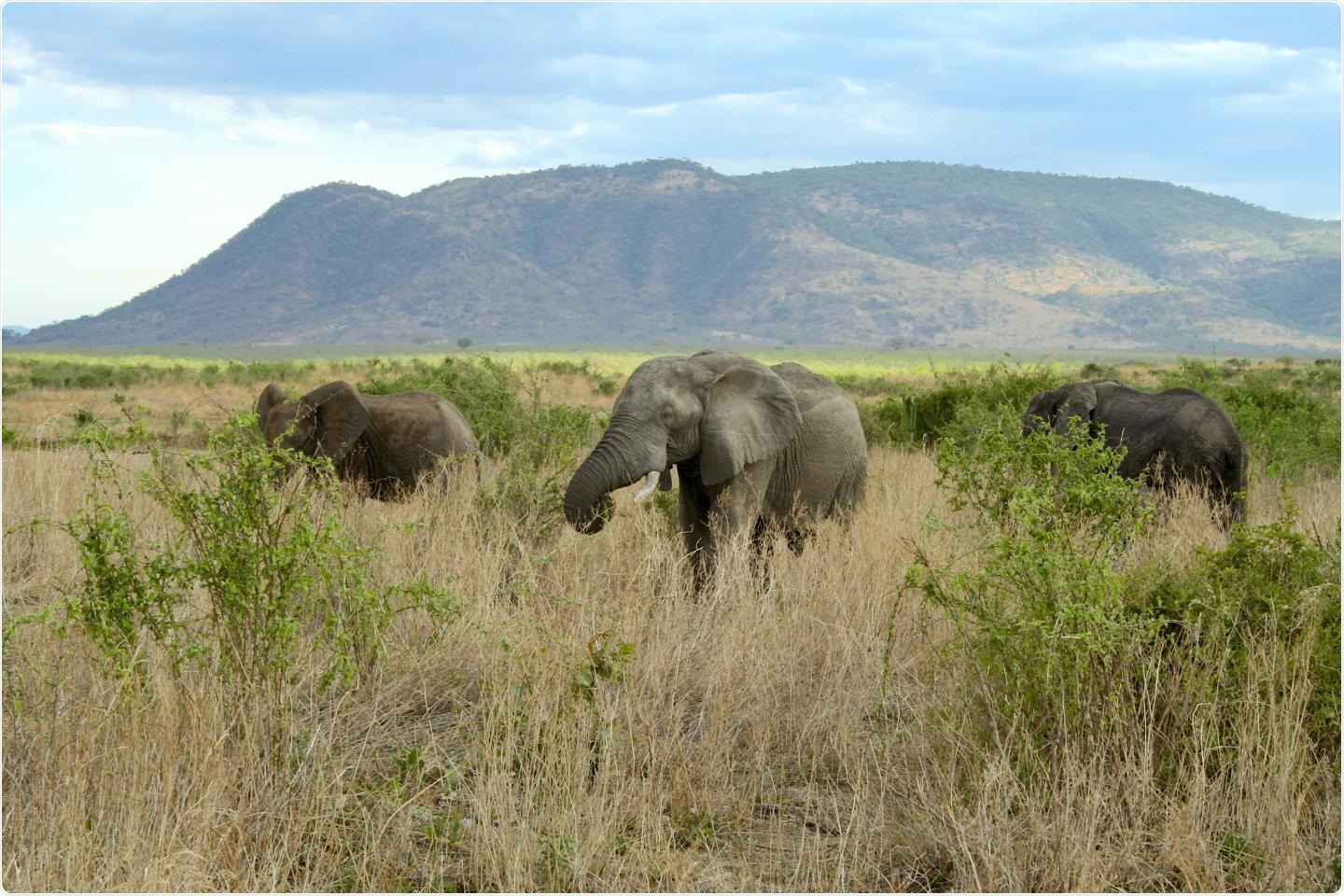When individuals think of engineering in nature, they would more probably think of beavers—the dam-building, tree-felling rodents whose machinations can mold the landscape by producing lakes and altering the rivers’ path.

Elephants engineer their ecosystems—they root out saplings and small trees, creating habitats for smaller vertebrates, which helps maintain the grassland. Image Credit: Justin Yeakel.
However, beavers are not the only organisms to remold their settings. A squirrel that unknowingly plants oak trees is also regarded as an “ecosystem engineer”—generally speaking, any kind of organism whose effect on the setting outlasts its own lifespan.
According to Justin Yeakel, an ecologist at the University of California, Merced, and a former Santa Fe Institute Omidyar Fellow, the shipworm could be the coolest of these biological builders. Such an organism eats through rocks found in streams, predicting conformable abodes for upcoming invertebrate inhabitants.
Yeakel is also the lead author of the latest research paper that models the long-term impact of ecosystem engineers. For a long period, scientists have accounted the role played by the ecosystem engineers in natural histories, but this research is among the first to quantitatively evaluate the ecosystem engineers in an ecological network model.
We wanted to understand how food webs and interaction networks were established from a mechanistic perspective. To do that, you have to include things like engineering because species influence their environment and there’s this feedback between the environment to the species.”
Justin Yeakel, Study Lead Author and Ecologist, University of California
The model particularly makes use of simple rules to prove the assembly of food webs, the extinction of species, and their interactions that change over a period of time. One striking outcome is that only a few ecosystem engineers have led to several instabilities and extinctions, whereas a majority of the ecosystem engineers have led to stability and some extinctions.
As you increase the number of engineers, that also increases the redundancy of the engineers and this tends to stabilize the system.”
Justin Yeakel, Study Lead Author and Ecologist, University of California
So, how to create an ecological network model? It is extremely abstracted because there are no particular species like beavers, or concrete environmental features like rivers. Everything is reduced to communications: species can make, eat, and need.
In this aspect, nature turns into a network of interactions. For instance, bees suck nectar from flowers; flowers need bees for pollination; trees provide shade that is required by the flowers.
The scientists applied a small number of guidelines to the model. Among them, the most important one is that species have to consume only one thing for their survival but they have to obtain all of the things they required.
In other words, even if one flower species becomes extinct, bees could still survive on nectar from other kinds of flowers. However, if either trees or bees fail to deliver shade or pollination respectively, which are required by the flowers, then they will become extinct.
By employing such rules, the models successfully created ecological networks analogous to those found in the real world, with a typical hourglass shape in the diversity of species—representing more diversity at the bottom and top of the web, but less in the middle.
Yeakel plans to incorporate evolutionary dynamics so that species can alter what they eat, need, and make, to extend the model for upcoming studies.
Before humans evolved two and a half billion years earlier, cyanobacteria were a planetary-scale engineer that gradually altered the composition of the whole atmosphere by oxygenating it.
However, unlike photosynthetic predecessors, “we’re making changes on ecological timescales rather than evolutionary timescales. Is an organism that becomes a planetary-scale engineer doomed to extinction if it changes the environment too quickly?” Yeakel concluded.
Source:
Journal reference:
Yeakel, J. D., et al. (2020) Diverse interactions and ecosystem engineering can stabilize community assembly. Nature Communications. doi.org/10.1038/s41467-020-17164-x.